|
By Hilda Joy From the archives 8/19/2022 Our very American Fourth of July culinary celebration can be enhanced by reaching across our Southern border to our Mexican neighbors and borrowing one of their well-known street foods, Eliote, but adapting it to please several people. After all, we corn-consuming Americans owe Mexico thanks for its agricultural gift of maize. The word ‘Elote’ derives from ‘Elotl,’ a Nahuatl word meaning ‘corn on the cob’ or ‘tender cob.’
Having grown up in Chicago with its large Mexican population, I learned to appreciate Mexican food at an early age. The first Mexican food I ate as a child was a tamale sold by a street vendor in our neighborhood. This inauthentic treat, wrapped in paper rather than in a corn husk, acquainted me with masa and a spicy filling and gave me a life-long taste for Mexican food. I did not know about Elote until much later in life when I was strolling along one of Chicago’s beautiful Lake Michigan beachfronts and getting hungry. I bought a cob of Elote and fell in love with it and am still smitten by it. You might not find an Elotero from whom you can buy a single cob on the street, but you can easily grill this dish in a quantity to feed your family and/or friends. EnJOY Elote is a popular Mexican corn street food eaten as a single serving sometimes on a stick but most usually simply by holding it by its stem under the shuck of green leaves left on the ear. This recipe retains the classic ingredients but serves as a side dish during grilling season. Ingredients 6 ears sweet corn Vegetable Oil 1/4 cup mayonnaise 1/4 cup Mexican crema 1 teaspoon chili powder 1/2 cup cotija cheese or queso fresco 1/2 cup cilantro, finely chopped lime wedges
0 Comments
Poetry for the dogs. By Zach Hively Here’s a little secret insight, a peek behind the curtain, a glimpse behind the veil: I am, whatever else you may have heard, a human being. And that means I come with a whole duffel bag of junk that all the other species on Earth, so far as we know, never have to deal with. Except dogs. Dogs have to deal with all our junk. Because they’re dogs, and it’s what they do. Sometimes I, being human, get in my own way. This is especially true when I am trying to be a writer. It’s less true when I’m trying to put frozen chicken tenders in the oven. Most humans should be able to handle that. (Although you’d be surprised.) But writing requires me to create something outside myself, using only what’s in myself, which exists only in the world outside myself. When I get in my own way too much as a junky human being, the best way out is to love on my dogs. And when I get in my own way too much as a writer, the best way out is to write haiku. Good haiku is an exquisite artform. What I usually do is chicken-tender haiku. The sort where I say to myself, “Any ol’ writer can write seventeen measly syllables!” And then I make myself prove it. I recently undertook a Big Adventure with my dogs. We got out of our usual everything and put ourselves somewhere new, for a time. There is exactly one extrovert in this pack, and he took right to it. There are exactly two introverts in this pack, and one of them handles things with much more grace than I do. So when the writing got tough, and my insides felt junky, I started scribbling down some chicken-tender haiku … from the perspective of two dogs on a Big Adventure. Here is what came out. hey, hey, did you know we get the same food here, but water tastes different before our desert we knew paved alleys and grass hello, our old friends seasoned country dog my first suburbanite squirrel talk about wild life short-term neighbor's ask: do you want to say hi? no? i'm just like my dad strangers coo "handsome!"
we have thoughts: Amazon trucks should follow my rules favorite toy, new rug can i still lay on your foot? home away from home By Sara Wright A few months ago, Carol sent me a picture that Brian took of a bird’s nest in one of the canyons. I recognized the nest immediately as one that belonged to the Great Horned Owl. I told Carol then that I could write a story about that photo, and here I am. Finally! Living in Abiquiu was one of the most powerful experiences of my life, and great horned owls were an intrinsic part of that story. A few days after moving to Abiquiu in 2016, I had placed my dove Lily b in a cage on the little porch outside my bedroom door. Imagine my shock when I looked out one evening and saw a great horned owl wandering around on the stones near the cage. Transfixed by the sight of seeing a giant meandering owl and a motionless Lily b peering down at a potential nemesis from his perch, obviously unperturbed (we read each other’s minds), was nothing short of amazing, so a couple of seconds passed before I scared the bird away.
I wasn’t worried because my dove’s cage was constructed out of thick metal hardware cloth and had a plywood roof- a sturdy roost that had been built for him so he could stay out at night. Black bears and hawks of all kinds never bothered him in Maine, so I assumed nothing could get to him here. This naivete and stupidity on my part almost cost Lily b his life. I left the cage outdoors because Lily b loved to sit in the rain, and even if I pulled the plywood back during a rainstorm, the mesh still protected him, and the second solid roof went back on at night. One morning, I was awakened to a frightening, harsh croak my dove had never made before. Rushing out the door, I found my terrorized bird badly mangled and bleeding, numb with glazed eyes, suffering intensely from a deep gash that ran from his eye through his breast. Unhinged, I literally couldn’t believe what I was seeing. Kindly neighbors rushed us to a vet who said she was not certain she could save his life. It took my bird almost three months to recover. The deep wound had severed his vocal cords so he never cooed his most beautiful song again, but he lived and that was what mattered. Who else but a night owl with powerful talons could have attacked him? I surmised that the g/horned owl must have come back, terrorized him, and once Lily b was on the floor of the cage – probably dazed/ or knocked out – the owl struck at him through the bottom 2-inch opening, a place where a tray was situated. I’ll never know. So began our lives in Abiquiu. What is strange is that two weeks before leaving Maine, Lily b and a great horned owl conversed back and forth for three nights in a row (my dove was in the house). This conversation, although melodious, really disturbed me for reasons I didn’t understand, except that it seemed so abnormal. Normally, lily b became a rigid statue on his indoor perch whenever these owls hooted from anywhere, and they have such varied calls. Great horned owls are common in these forests around my house in Maine, and Lily had never spoken to one before. Back to my story. After we moved down to the river, great horned owls followed us, often perching on the roof or hooting from nearby branches at night. Every morning when I walked to the river before dawn, I met a great horned owl who perched in one cottonwood over my head. I dissected owl pellets and sought these owls out in the canyon closest to the casita. Fascinated. Some days, a great horned owl could be seen sitting on a ledge on the edge of the stick nest in a craggy corner of that canyon or others. Occasionally, I would glimpse an owlet or two in canyon crags. For four years, I lived with owls of all kinds, but the great horned owl was the one I heard every night. Great horned owls are in the genus Bubo. All other species are found throughout Europe, Asia, and Africa. Great horned owls can be found living in most states throughout Canada and Alaska, the US, Central, and South America. They are large, impressive, robust birds with two prominent feathered tufts on their heads that look like ears but aren’t. Ears are unevenly placed below the tufts for acute hearing, but for me it was always those eerie glowing yellow eyes that captivated me the most (even before daylight, they were visible)…those eyes and their fierce expressions. Their pupils open widely in the dark, and retinas contain many rod cells for excellent night vision. Their eyes don’t move in their sockets, but they can swivel their heads more than 180 degrees to look in any direction. The owl’s sensitive hearing is thanks in part to their facial disc feathers that direct sound waves to their ears. Great horned owls are nocturnal, but as my experience demonstrates, it is possible to see them long before twilight or dawn. I sometimes spied one flying across the field with large curved wings. Their calls are beautiful, a deep resonant series of whoos. Curiously, ‘the hoot of the owl’ is one of the Tewa meanings of the word Abiquiu. Although I heard other owls call during my four years in Abiquiu, none vocalized regularly, maybe because the others chose not to voice their opinions around such a fierce character that predated on smaller owls as well as most other wildlife. They can take down animals and birds even larger than they are, but they also love mice and other tasty rodents. Here in Maine, they predate on loons, geese, and ducks. Finding pellets and pulling them apart is a fascinating hobby I engaged in routinely, trying to figure out just who happened to be the unlucky prey. Great horned owl coloring varies from gray-brown to a sooty gray. In Maine and New Mexico, the ones I met all looked the same with reddish patches on their faces and white at the throat. Both sexes look identical, but the female is larger. They live just about anywhere. Around Maine, they are common in the forests, but their habitat can vary from deserts, canyons, swamps, fields, to parks! Great horned owls are particularly common in New Mexico. Breeding season begins in early spring. They are supposed to take over the nests of other birds, and I have no way of knowing who constructed the original stick cavities that were tucked into the cliff edges in the canyons near me, because the nests I found looked similar to the one Brian photographed. When clenched, a great horned owl’s talons require a force of 28 pounds to open. That grip can sever the spine. Another advantage of being such an excellent predator is a long life span – twenty years or more. My guess is that climate change will not decimate this owl, whose populations remain more than stable. How refreshing. After returning home from Abiquiu Lily b has not had any experience with great horned owls. Occasionally, I hear one calling from out my bedroom window, but his roost is on the other side of the house. When the Boreal owl visited this winter, Lily watched him from his indoor perch, so apparently small owls don’t bother him. One final comment. When I was in my late forties, I had a very compelling dream. I was looking at an owl who had a large crystal on her head. The feeling tone was one of beneficence. Owls are often associated with prophecy, especially great horned owls, who can also be omens of a coming death/ disaster, etc, according to many Indigenous traditions. Although it wasn’t a great horned owl, this dream still made me feel uncomfortable, and it has stuck with me all these years. At about the same time, I spent a weekend in Maine with a Navajo Medicine Woman who made a point of keeping her distance from me. I was baffled and hurt. Finally, I asked her what it was about me that she disliked. She told me that I had Owl Medicine, and for the Navajo, this bird spoke to her of coming death. I lost four family members in the space of less than two years. Interview with David Michael Kennedy By Jessica Rath Once upon a time, a photographer had to carefully insert a roll of a tightly-wound plastic strip into the camera, making sure that the perforation on each side of the strip would line up perfectly with the little gear teeth which transported the strip. It was called a film. When you had it securely installed (which could be tricky) you could take up to 36 pictures. You had no idea how they’d turn out until the film was developed – another complicated procedure which professional photographers performed in their own darkrooms, while ordinary folks would use a commercial lab. And then, just like that, digital photography replaced all of the above – to the extent that most amateur photographers use their smartphones to take pictures, while professionals have a wide range of high-end digital equipment at their disposal. Except there are some who keep the art of analog image-making alive. One of them is David Michael Kennedy, whose portraits are displayed at the Smithsonian Institution. Of course, the road less traveled is never easy. When I visited David at his studio in El Rito, he had just gone through a frustrating experience: most of the fifty sheets of printing paper he had ordered turned out to be useless. He explained what had happened: “The process I do is platinum palladium printing, one of the first photographic processes ever developed. I use fine art watercolor paper, but not many papers work well for this kind of process. The one paper that was designed for it and works really well is Revere Platinum paper. But it's got imperfections embedded within it. For people who use their developer at room temperature, the paper doesn’t seem to react. But I use an almost boiling hot developer because it makes the pictures even warmer, and I get black spots because of the imperfections.” Michael continued: “I just bought 250 sheets of 22” by 30” paper. It's five bucks a sheet, and I'm trying to print something that's 18” by 18” because it has a lot of white area. So far this morning, I've gone through 60 sheets of paper. I haven't found one I could use, because of the imperfections. The guy who makes the paper is a friend of mine, and we've finally figured out what the problem is: the really, really hot developer which I use interacts with the imperfections in the paper, whereas if I would use room temperature developer, it seems not to react. But then I don't get the warm tones.” We looked at a big, beautiful book: THE BOOK OF ALTERNATIVE PHOTOGRAPHIC PROCESSES by Christopher James, University Professor and Director of the MFA in Photography program at Lesley University College of Art and Design in Cambridge/Massachusetts. David gets mentioned in the book several times, with examples of his work. James wrote: “David Michael Kennedy is arguably one of the best platinum palladium printers in the world, and the creator of many of my favorite images.” I understand David’s frustration. Should he just give up taking pictures, or switch over to archival inkjet prints? Neither option looks like a good solution. I hope he’ll find a way to continue with his technique, using the high-temperature developer. I was curious about David’s background and learned that he grew up in Northern California. His parents lived in Portola Valley, near Palo Alto, and when he was 17, David moved up to Humboldt County. But when he was 19 needed back surgery, and at that time, his parents were living in Connecticut. So he moved to Connecticut for medical help in New York City, found a doctor, and had surgery. But then found himself stuck there, without money. He had done some photography while in Northern California, landscapes and portraits of people, and because this was something he had loved to do he decided to give it a try professionally. “I got a job in New York as an assistant to a still life photographer,” David continued. “And then I realized I could do this on my own, so I opened a little studio, and I started doing horrible advertising stuff and some fashion, and some beauty, but I didn't really like it, particularly the beauty part of it. But I had good clients. I worked for Bill Blas and other pretty good designers, but the beauty work bothered me, because it was so fake. A model would come in and she's sitting there, and we’d use lighting and make up so the cheekbones and everything looked perfect. The hair person and the makeup person take over, and then they retouch her, and by the time it's in the magazine, it doesn't look anything like what this woman really looked like.” It was fascinating listening to David. The New York City art and music scene in the Seventies – if you’re old enough to know about it, you’ll understand how excited I was. “So then when the art director I was working with moved over to CBS Records, she took me with her. I started doing ads for records, and that was fun, but I really wanted to do covers, because that's when you get to do the cool stuff.” “I started a project where I contacted the top art directors who did album covers in New York. Actually, first I called the trade magazines, and told them that I’m doing a story on the most important art directors for album covers in New York, and asked if they’d publish it. And they were very interested. So then I called all the art directors that did album covers, like John Berg, who was VP Creative Director at CBS, and Bob Defrin, who was VP Creative Director at Atlantic. I told them that I was doing a story on the most important art directors in New York City working today.” The clever plan paid off: they all came to David’s studio, he did portraits of them, and then sent them a matted silver print of their portrait. Within three months, most of his business was shooting album covers, and his editorial celebrity pictures grew out of that. “That's how I got into celebrity stuff,” David went on. “I did that for about fifteen years. And then my son was born, and by the time he was two years old, digital technology totally changed the business. I saw the writing on the wall, and I decided, it's time to leave. So we shut down my studio, packed up and came to New Mexico. The bottom line is, I never intended to stay in New York, and I never intended to do this high society ‘going to Studio 54’ lifestyle. But everything was very serendipitous and fell into place, that’s why I did it.” At heart he always remained a country boy from Humboldt County, David told me, something that may have contributed to his success in New York – he was different from most of the other celebrity photographers and never embraced their fancy lifestyle. His studio was relaxed and looked like a home, which made his clients immediately feel at ease. It has to do with trust, David explained: when they’re willing to let go and feel comfortable, when they’re starting to have fun, that’s when the true person comes out. As long as they’re nervous – How do I look? How should I sit? – the person inside is hidden, as if behind a mask. “One of my favorite stories about relaxing people is the one with Bob Dylan,” David continued. “I'd photographed a fair number of pretty major people by the time I got the assignment for Dylan, but he intimidated me. I mean, he's Dylan. When I got the job, the art director told me that Dylan didn't want some fancy fashion photographer. So I thought about it, and I flew out from New York with all this heavy equipment, loaded it up in the van, told my assistant he had the day off, and drove up the Pacific Coast Highway to Dylan's house. I was nervous and also really excited, but I knew that wasn't going to work. When I got to his house, he came walking out, and he had two beers in his hand, and he was barefoot. And he said, ‘Hi, I'm Bob Dylan.’” We both laughed. Oh, really? “And he said, ‘Do you want a beer?’ I accepted and we sat down on the front steps. I could tell that he was a bit confused, ‘Here's this one guy in this van, where is his team?’ And he said, ‘Well, so what are we going to do?’ My answer was: ‘Look, Bob, I just had major back surgery (which was true), so I need you to help me unload the truck, okay?’ When I first said that, he kind of looked at me, like, ‘But I'm Bob Dylan.’ But I got him to help me unload all these cases. And next I got him to help me hang this canvas up on the wall of his house. That way, we were just two guys making pictures, hanging out, and he was totally relaxed. I was totally relaxed!” I love this story. It shows that David is introspective, that he doesn’t overcompensate with excessive swagger when he feels intimidated, but he listens to what the feeling tells him – and from that, he learns how to approach the other person. People sense his openness, and they relax. “It's not how you're posing them, it's not how you're lighting them,” David explained. “That has some importance, but the main thing is the connection. Whether I was working with Willie Nelson, or Springsteen, or Muddy Waters, or Patti LaBelle, it was always: how do you find a way to to break the ice, how do you make a connection and develop a level of trust. Once people start to trust you, they become more real, they let down the mask and let you in.” “I photographed Muddy Waters when he was in New York for a few days. A couple of days before we did the shoot, he invited me to visit some of his shows. For two days, I saw his shows and then hung out with him afterwards, had beers, talked and got to know him. When we got to the studio, we'd already developed this friendship, a relationship. With each person, it's a completely different story.” When did you move to New Mexico, I wanted to know. “In 1986, when my son was two years old,” David recounted. “Everybody was switching over to digital, and I really didn't want to do that because I love film. And I never planned on staying in New York forever, anyway. So my wife and I took a month to drive around the country and visit all these different states. And we both agreed New Mexico was where we wanted to be. On that trip, we found a little house in the village of Cerrillos, that's south of Santa Fe, which we bought and then we went back to New York. It took us six months to shut the business down and leave.” “Then six years later we got a divorce, and I bought an Airstream trailer and left. My then-girlfriend and I lived in the Airstream trailer for three years, just traveling the country and photographing, which was really wonderful.” David’s parents, who lived in Connecticut, were getting elderly, and they rented an old barn nearby. They took care of his parents, and David had his dark room in the old barn. After his mother died and his father was well enough to take care of himself, they decided it was time to get back to New Mexico. Heather, David’s girlfriend, was an amazing Rio Grande Weaver. “She was one of the few true loves of my life,” David added. “My first one was Lucy, who I was married to. We were together for 35 years, and she was the mother of my son. And then the second one was Heather, and she was a weaver.” When they moved back to New Mexico, El Rito College had an exceptional weaving department, and Heather wanted to teach there, that’s how David ended up in El Rito. The college had an RV parking place on campus, and that’s where they parked the airstream. And then the house where he lives now became available, with enough space for a dark room and the studio, so he bought the house, built it up, and moved in. “Heather and I unfortunately parted ways”, David explained, “but we're still good friends. She lives near Rinconada on the road to Taos. So, it was Heather who brought me to El Rito.” I was curious: do you intend to stay here, I wanted to know. David’s answer was a bit troubling. “I'm having mixed feelings right now. With all the property here, with the size of the house and the size of the gallery, it's an awful lot of work for one person. For example, I'm trying to get those prints done, but we're trying to irrigate the back fields, because I have almost two acres of fields in the back, and I just did all our apple trees, but I still got to do all the apricot trees, and I’m trying to get the grass going to grow here. I've got something like 500 projects listed, but I'm getting older and I don't have the energy I used to have. So I'm beginning to question whether this is just too much for me. I'm not sure how much longer I'm going to be here by myself, because it is an awful lot to take care of.” And what about your son, I asked. “He used to live in Denver, but now he lives just down the road near Medanales. He's got a partner, and he has his own life, he's got all these things he's working on, and he's having a few health issues to deal with. He's an amazing artist, but he doesn't do it, and I think growing up with me was a discouraging experience. I made plenty of money in New York, but when we moved here all the commercial work went away. I knew the minute I walked out of New York City that I was going to burn every bridge and I was not going to get any more assignment work. It was just going to be my fine artwork, and making a living as a fine art photographer is not easy. I've been very lucky, but it's not an easy thing.” I knew that David is part of the El Rito Studio Tour, and I asked him about it. “The Studio Tour here is lots of fun. You get to meet a lot of nice people. Some years it's actually very profitable – and other years it’s not so great. We always have barbecues going and we cook food, do entertaining. It's a nice thing for the community.” “I'm lucky,” David continued, “because people do find me and show up here. People hear about me by word of mouth and from my website. And then I have a gallery in Santa Fe, Edition One Gallery. They carry my work.” “The first seven or eight years here were just hell, we were living on credit cards more than anything. And then I got into the Andrew Smith Gallery, Santa Fe’s major photographic gallery (they relocated to Arizona a year or so ago). Slowly, over the years, my career developed and I started getting collectors and they started knowing about me. So now – I guess I'm successful because I haven't declared bankruptcy!” David had one other story: "Two women came by here the other day, they'd seen my brochures and they wanted to come and see my work. They spent an hour or two looking around, and they bought a little bit of work. One of them sent me this email, which was just really sweet, let me read it to you. This is what she said:
‘It was a visual treat to visit you, your beautiful pup [David’s dog Cody], and see your work. I thought your studio was really handsome and so well kept. I know how much work that is. I was thinking about it last night and thinking how much money, effort, creativity and passion it takes to assemble a body of work such as yours. It's so impressive. And more than that, it shows who you are then and now. There aren't a lot of folks like you milling around these days. It may sound strange, but I'm very proud of you. It was my good fortune to meet you.’” I can certainly confirm that impression. It was such a pleasure to meet this authentic, eclectic artist who cares more about his vision than about financial security. Thank you, David, for taking the time to meet with me. David offers several workshop opportunities for people who want to learn from him. One can choose between a focus on landscape, or portrait, or the Platinum/Palladium process. There will be only one student at a time who will be fed and hosted by David, and transportation from and to the airport is included. If this amazing opportunity speaks to you, please visit David’s website for more information. Updated 9/9/25 - FINAL UPDATE 9/5/25 - no more further updates Release Date: September 5th, 2025 Acres: 17,415 Start Date: 6/25/2025 Containment: 90 % Location: Located in the Coyote Ranger District, 8 miles north of New Mexico State Road 96 and west of the Chama River Canyon Wilderness. Personnel: 5 Resources: 1 engine Fuels: Oak brush, ponderosa pine, Piñon-juniper Highlights: This is the final update for the Laguna Wildfire. Engines continue to monitor and patrol the Laguna Wildfire perimeter daily. No smoke has been visible for the last two weeks. The Burned Area Emergency Response (BAER) team has completed their soil burn severity map and it is available to view at Inciweb-Laguna Wildfire or NM Fire Info. Weather and Smoke: Showers and thunderstorms are expected throughout the week in the fire area. For the most up to date smoke information, visit https://fire.airnow.gov/. Safety: For the safety of our firefighters please avoid the area where crews are working. Closures and Evacuations: The Laguna Wildfire Closure Order has been lifted. Please exercise caution when traveling within the burned area. Gallina Ranch remains in READY evacuation status. More Information: 505-435-5320 | [email protected] | x.com/SantafeNF | facebook.com/santafeNF | Inciweb-Laguna Wildfire | NM Fire Information About the Forest Service: The USDA Forest Service has for more than 100 years brought people and communities together to answer the call of conservation. Grounded in world-class science and technology– and rooted in communities–the Forest Service connects people to nature and to each other. The Forest Service cares for shared natural resources in ways that promote lasting economic, ecological, and social vitality. The agency manages 193 million acres of public land, provides assistance to state and private landowners, maintains the largest wildland fire and forestry research organizations in the world. The Forest Service also has either a direct or indirect role in stewardship of about 900 million forested acres within the U.S., of which over 130 million acres are urban forests where most Americans live. By: Danielle Prokop and Julia Goldberg Source NM On the 80th anniversary of the Trinity Test, downwinder and uranium miners discuss New Mexico’s nuclear legacy — and finally receiving recognition from the federal government By: Danielle Prokop and Julia Goldberg - Wednesday July 16, 2025 5:49 am The July 16, 2025 80th anniversary of the Trinity Test arrives in New Mexico at a poignant moment, and serves as just one example of the state’s nuclear legacy. Generations of survivors of the federal government’s nuclear testing program and the state’s uranium mining industry have waited for years for recognition from the United States as they watched their friends and families die from cancers. The 1990 federal Radiation and Exposure Compensation Act — created to provide restitution to people sickened by exposure to radiation and uranium — excluded New Mexico’s downwinders and post-1971 uranium miners, and expired last year after years of lobbying for expansion by victims and New Mexico’s elected leaders. New Mexico Democratic U.S. Sen. Ben Ray Luján, for instance, began introducing RECA legislation when he was first elected to the U.S. House in 2008, and did so so every year since. Just last month, Luján, other members of the state’s congressional delegation and long-time advocates held a news conference to call for RECA’s renewal once again. Over the years, the coalition calling for RECA’s expansion and extension has grown across states and become a bipartisan effort. In the end, Republican U.S. Sen. Josh Hawley of Missouri got it over the finish line as a provision in President Donald Trump’s massive tax and spending bill. Advocates and New Mexico officials say while RECA’s passage is worthy of celebration, more remains to be done. “It was quite a relief, because we’ve waited so long,” said Tina Cordova, founder of the Tularosa Basin Downwinders Consortium, during a news conference last week. The documentary film First We Bombed New Mexico highlights Cordova’s 20-year fight for justice for New Mexico’s downwinders. “Honestly, the acknowledgement is long past due,” she said. “But I also want to recognize…that we’re not there yet. We still have a lot of work to do.” RECA’s two-year expansion “will not be long enough for us to get everybody enrolled that should be enrolled,” Cordova said. The bill also provides $100,000 lump sum payouts but no longer includes health care coverage. “We will take the win, and we will continue our fight,” Cordova said. “And we will also never forget that there are some very important people that have been left out: the people of Guam, the people of Colorado, the people of Montana, the remainder of Arizona and Nevada.” While grateful New Mexico was included, she said, “we will continue to stand shoulder-to-shoulder with our sisters and brothers from those places who we’ve come to love.” Luján and Mike Crapo (R-Idaho) last week also sent letters to U.S. Attorney General Pam Bondi and Secretary of Labor Lori Chavez-DeRemer urging both to issue guidance quickly for RECA given the short timeline for compensation. Later on Wednesday, a sign dedication will take place at the entrance to the Trinity site, placing a marker there “acknowledging the sacrifice and suffering of the people of New Mexico as a result of the Trinity bomb,” Cordova said. A mass in the evening in Tularosa will include the annual candlelight vigil and reading of the names of the people who are no longer here. Source will have coverage from both events. In advance of the 80th anniversary, Luján issued a statement about the anniversary, characterizing it as “eight decades of pain, loss, and injustice for the victims still living with the fallout of nuclear testing and uranium mining…As we reflect on the lasting harm caused by these tests and the government’s negligence, we must renew our commitment to the people still suffering today. That means doing everything we can to help them access the compensation they deserve. Together, we will keep fighting to make sure no one is left behind.” Below, Source’s Danielle Prokop offers portraits of some of those survivors. —Julia Goldberg Tina Cordova Tina Cordova has relived the death of her father, Anastacio, many times over. In speeches before a handful of people, in phone conversations with reporters and when Luján commemorated her father on the Senate floor of Congress on March 7, 2024. Anastacio’s story starts in Tularosa in 1945. He was just 4-years-old when the federal government detonated the first atomic bomb in the Jornada Del Muerto desert 45 miles away. Like many people living there, he drank water from open cisterns, ate local crops and hunted wildlife for food — all likely contaminated with ash from radioactive fallout. Cordova’s voice only shakes a little as she recounts his death from 12 years ago: He whittled away to 125 pounds, the pain he was in, the months on a feeding tube. He was diagnosed with two rare oral cancers and prostate cancer — all compensable under RECA, except the program excluded the New Mexicans living downwind from the first-ever bomb. Cordova, 64, said her dad’s death also gave her clarity. She’s a cancer survivor herself and founded the Tularosa Basin Downwinders Consortium in 2005 to advocate for southern New Mexicans impacted for generations by the legacy of Trinity. “I chose to do this work. I know it’s my life’s work. I know I’m suited to do this work, and I’m grateful that I’ve had this opportunity,” she told Source NM. 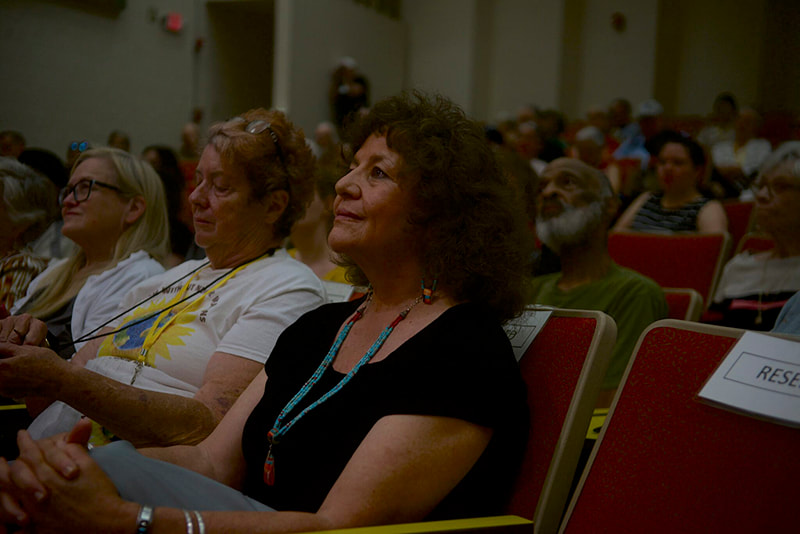 Tina Cordova attends an interfaith service remembering the Trinity Test on Sunday, July 13, 2025. ‘The government never warned us afterwards, never said we should be concerned,’ she told attendees. ‘But today, we have acknowledgement, and we have the beginnings of going back to the government for more, and we will do that.’ (Danielle Prokop/Source NM) With the recent extension of RECA, her father will finally be recognized as a downwinder and her mother may finally receive compensation on his behalf. “My dad should still be here;$100,000 pales in comparison to who he was, and who he used to be to us,” she said. “I don’t want to sound ungrateful, I don’t want to minimize what it means, but that’s not justice. That’s the beginning of justice — it’s a step forward in the right direction.” Cordova said she’ll take the fight back to Congress to expand benefits to states and territories that were left out and require the government to pay to cover health care costs for people exposed. She said that in the last year, her niece was diagnosed with thyroid cancer and her youngest brother with kidney cancer. “This just doesn’t end for us,” Cordova said. “These are the people that we can never stop fighting for. These are the people that we can never allow to be forgotten, to just basically be treated as the human collateral damage.” Larry and Arlene Juanico Just under the mesa, past the horno outside of Arlene Juanico’s childhood home, lie the remains of the Jackpile uranium mine, once the largest in the world. Nearly 60 miles outside of Albuquerque, the holes appear on Laguna Pueblo lands between the red and white striated mesas, nearly abutting the little village of Paguate. With the rush for nuclear arms during the Cold War and the domestic expansion of nuclear power, the federal government was seeking to purchase uranium. A thick belt of ore snaked from Navajo Nation lands through Grants and into Laguna Pueblo. The mine operated from 1951 to 1984, marring the landscape. Tracks from the trucks wind through the valley. Entire mesas now have a terraced effect from the strip-mining. After the rain, there comes the smell: a sharp, metallic smell of uranium. Life in the village before the closure was punctuated by blasts from the mine site, scattering light yellow dust across the landscape. “When they blasted, everything shook, our homes rattled,” she said. “Often the ladies would run out to get the laundry, get whatever meat or fruit would be drying in the yards.” Like her father and brother — who later died from cancers — Arlene Juanico worked at the mine. She drove the water truck on the narrow roads, making good money at what she thought was a good job for a single mother. Her husband Larry Juanico also worked at the mine, then transferred to the Bluewater Mill, where the ore was processed into yellowcake uranium, with minimal safety precautions. People packed uranium into 55-gallon drums with their bare hands. He’d have to clean bins by climbing into them and scrubbing them with a brush, no masks, no suits. Since they worked after 1972, the Juanicos and other uranium miners and millers did not qualify for RECA, even as many died or were sickened by exposure from radiation. But even now, the recognition or compensation from RECA is paltry to the devastation left by the mine, he said. “Our people, our animals, our culture, our way of life are all affected by what’s happened here. The money part of it is good, but it’ll only last for a certain amount of time,” Larry Juanico said. “After all that’s gone — we’ll still be dealing with this.” After the mine’s closure, the waste it left behind leaked uranium and other metals into the surface water and released radon, a cancer-causing gas, into the air and people’s homes. Clean up by the federal government remains unfinished. The Juanicos said federal efforts to restart uranium mining in the area are insulting to the people sickened by exposure. “They haven’t been taking care of us, but they want to start new mines,” Arlene Juanico said. “That will force the next generation to still fight for what the federal government still hasn’t lived up to.” Paul Pino Paul Pino, a retired schoolteacher, was in a daze for several days after Congress passed RECA on July 3, saying the July 4th weekend passed in a haze. “I’m feeling two very different things,” he said. “On one hand, totally ecstatic, like over the moon, the best feeling of victory and happiness I’ve ever had in my life. On the other, I feel terrible for the people who’ve been left out from the bill; they needed the compensation also.” Pino was born nine years after Trinity, but his mother, big brother and two older sisters were living on his family’s Carrizozo ranch, only 54 miles from the test site. His mother survived bouts of skin cancer, but died from bone cancer – selling her pickup to pay for her funeral costs just before her death. His older brother Greg died from stomach cancer, while one sister had breast cancer and the other suffered from several brain tumors. “It was 100% devastation to my family,” he said. Pino joined the steering committee at the Tularosa Basin Downwinders Consortium to fight for compensation for New Mexicans impacted by Trinity. “All my life, plus more, people in New Mexico still have been waiting for some peace,” he said. “They got it on the 80th anniversary. It’s better late than never, you know?” Pino performs a song titled “It Ain’t Over ‘til We Win,” about the downwinders’ struggle. He recently changed the lyrics of the last line: “Yeah we won, and it’s still not over.” “But that’s all right,” he said. “You know it’ll be a good fight.” Phil Harrison Uranium mining was supposed to be a good job, not a death sentence. But for hundreds of people on the Navajo Nation, it was just that, said former uranium miner Phil Harrison. “There was no warning of the dangers,” Harrison told Source NM. “They took advantage of us.” Harrison, 74, is an advocate with the Uranium Radiation Victims Committee, a grassroots group formed in the 1970s as rising deaths and injuries rose among Navajo Nation uranium workers. He grew up in Cove, Arizona where 32 Ker-McGee Corporation mines operated from the 1940s to the 1980s. He was an underground uranium worker and remediated sites near Tuba City. He lost his father at age 44 to lung cancer, after 20 years working in the mines. His father was part of a spate of men on the Navajo Nation dying from lung diseases and various cancers, 400 former uranium workers died in Cove and Red Valley alone. “It wasn’t just the miners. Spouses and children who were also getting contaminated and exposed to radiation,” he said. The grassroots group was one of the first to file lawsuits seeking compensation from the federal government, which led to Congress establishing RECA in 1990 and expanding the program in the 2000s. The two-year window for the RECA expansion offers little time to collect the necessary documentation and visit doctors, sometimes out of state. For former uranium workers who are now eligible, that could mean difficulties since many rely on oxygen, are hospitalized or rely on assisted living and family caretakers. “We have to get started right away,” he said. “Time is of the essence.” Bernice Gutierrez Bernice Gutierrez, 80, nearly shares a birthday with the Trinity Anniversary, born in Carrizozo only eight days before the blast. Her family moved to Albuquerque just a few years after the test, but health concerns followed. Gutierrez documented 41 members of her family experiencing some form of sickness, including 23 members with cancers. Seven have died as a result, including her son from pre-leukemia in 2020. She’s documented health issues among downwinders and their descendants post-Trinity test for more than a decade, volunteering with the Tularosa Basin Downwinders Consortium. Gutierrez called the passage “bittersweet,” as the short extension of RECA came inside a bill that cuts food assistance and medical care programs for low-income residents, which New Mexico relies heavily on. “If the Medicaid cuts come to pass, it’s going to put people here in a world of hurt,” she said. utierrez said there’s only two short years to extend the program, while trying to enroll folks who never qualified before, meaning a lot of work for the volunteers ahead.
“It was not the victory that we had hoped for, but one that we’re happy to get. It’s a starting point for us, but a point that we will continue working on to change,” Gutierrez said. By Zach Hively This isn’t the first time numbers have threatened to ruin my life, dash my liberty, and dull a non-zero portion of any shot at happiness. They always start out with shiny promises, these numbers. Oh, if only I could quantify all my woes—and then track my progress with stats and data—I would become my fullest, best self. Maybe not at 100%. That’s an outlier result. But at least maybe my seventieth percentile self. My solidly-in-the-bell-curve self. The numbers got to me this time when I was feeling, at best, like I might make numbers people invent negative percentile selfs. Numbers don’t lie—and there I was with indubitably fewer pectorals (0) and abdominals (1) than, say, Chris Hemsworth. (Who has 12 and 17, respectively.) But it’s not fair to compare myself to the literal god of thunder from down under? Fine. I also have undeniably fewer pectorals (still 0) and abdominals (fine, also 0) than Liam Hemsworth (also 12 and 17, but less famously). To be perfectly, abundantly clear: I do not WANT the number of muscles it takes to become a Hemsworth. This is not about how I feel about my largely functional body. I like that it gets to eat pizza. This is about how I have never, in any way, dedicated myself to any one thing with the fervor, focus, and genetics that a Hemsworth applies to his trapezii. Not even with the things I do every day. Things like walking. Now I am aware that step counters are a thing I have only occasionally not been obsessed with. I am also aware that the ten-thousand-steps-a-day target is largely bubkes. A significant amount of walking or otherwise moving, regardless of some arbitrary numeric threshold, contributes to general health. I am ALSO aware that the moment I open up that dormant step counter app, curious if I have been passively Hemsworthing my walking, I will find myself lacking. The numbers will have their grip. I will calculate—sometimes several times a day—how many more steps I must take to elevate my daily average to that magical ten thousand steps, or to reach a robust twenty thousand steps, or (first things first) to get to my front door. Spreadsheets might be involved. Tracking my steps means, of course, that I can shunt most of the personal responsibility for my overall wellbeing to a simple metric: Do I take my phone for enough walks? Taking my phone for walks is essential for the health of my phone. Every step of the way, I ensure I provide it with enough enrichment for its needs. It gets to learn my habits and to eavesdrop on all my interactions. Its helpful suggestions, derived from my very own conversations with myself, have motivated me to numerify everything I do when I’m not walking. And I do mean everything. My intellectual stimulation is quantified by the streak on my language learning app. My friendships by a different streak on my language learning app. My professional performance by my streak of affording groceries. These streaks are not to be confused with my natural state of “being streaky.” The numbers hook my self-care to how many days in a row I accomplish even the quickest of tasks.
If I’m a Hemsworth at anything, it’s rushing through my Spanish practice lesson at two minutes to midnight, just so my three friends won’t feel let down. I do this while pacing to up my step count. Gaming the metrics, baby. Strangely enough, none of these efforts make me feel like I am a better self. Numbers don’t lie—but then again, neither do rocks, and I have found much more inner calm among those than I ever did in algebra class. I find myself remembering, yet again, that numbers alone aren’t destroying my life—but thinking I can quantify my way to passion, dedication, and my very first abdominal muscle means I might be missing something deeper and more fulfilling. I’m reminded of the time an elderly neighbor entrusted me, a teenager, to watch her house for a week. She told me how many times to water her plants. Accomplishing that metric drove me, still a teenager, to actually remember to watch her house and water her plants. The numbers had me. Riding by that house a short time later, I pointed out the front porch flowerbed and proclaimed I must have done a good job watering them right on schedule. My family laughed and laughed. Ninetieth percentile laughter. Those flowers, they said, were fake. Plastic flowers. They needed watered exactly zero times to look that bright. That all adds up to a pretty good lesson, if (unlike me) you care to do the math. 'There's no catching up': Ranchers lose cattle as Laguna Fire grows in Santa Fe National Forest7/17/2025 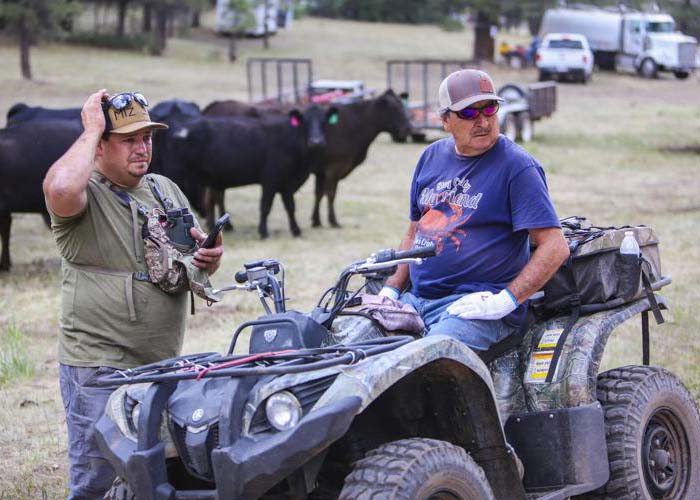 Adelaido Matinez, left, scans the tags of a group of cattle while visiting with Antonio Serrano on Monday afternoon near a newly burned portion of Santa Fe National Forest north of Gallina. Martinez said he had 39 cows and two bulls in the allotman and had found 35 cattle. Matt Dahlseid/The New Mexican Cattle grazing in the Santa Fe National Forest north of Gallina are lost and injured after the Laguna Fire, now sitting at more than 14,000 acres, grew past its containment lines late last week and started a spot fire. Members of the Vigil family, who have Forest Service grazing permits, searched for their lost cattle through ash-covered forest lands Sunday and Monday after fire tore through their grazing area. The Vigil Ranch in Gallina, a Rio Arriba County community west of Abiquiú, is missing at least 75 head, said Veronica Vigil, a school administrator in Albuquerque. That’s more than half the family’s herd of approximately 120. All of the family’s bulls, worth about $5,000 a pop, are missing. Many of the remaining cows are injured, Veronica Vigil said, some with burned hooves and, in some cases, scorched udders, making it impossible for calves to nurse. A video provided by the ranch shows a cow with a burned udder walking gingerly through the pasture on what appears to be injured hooves. “A representative from the Forest Service yesterday kept asking us for a number,” Vigil said. “It’s all of them. It’s going to be a systematic impact on our family forever; we may never recover from this.” The Vigil Ranch is one of several permittees missing cattle in an area scorched by the Laguna Fire. Their search for cattle comes as the Forest Service has warned of the potential for evacuations in the Chama River Canyon near Abiquiú, a popular area for camping, rafting and other outdoor recreation that also is home to a few dozen monks at the Monastery of Christ in the Desert. The Southwest Area Incident Management Team 1 was brought in to take over the fire response, with a goal of full suppression — a shift from the initial plan for crews to manage the blaze but allow it to continue burning. Wildfire balloons The Laguna Fire was ignited June 25 by a lightning strike. Fire managers with the Santa Fe National Forest said they planned to manage the low-intensity fire, which was burning in an area previously thinned and treated with prescribed burns, in an effort to bring fire back to its historic role in the forest ecosystem. A Forest Service web page says planned burns, and in some cases wildfires, can be useful for forest health and can prevent worse fires from occurring — under the right conditions. The “right fire at the right place at the right time” can reduce fuels, prevent the spread of disease and pests, and promote soil health by recycling nutrients. But recent updates on the Laguna Fire show people in certain areas were warned to prepare for evacuation. Between July 1 and July 14, the fire’s size had ballooned from 176 acres to more than 14,000. A Saturday update said a spot fire had been discovered Friday outside containment lines near Laguna Peak. As of Sunday night, the 14,700-acre fire was 45% contained, down from 87% containment reported Thursday. Santa Fe National Forest also announced Sunday it was putting Christ in the Desert under “set” evacuation status, urging residents to stay aware and informed, gather supplies and emergency contacts, and develop evacuation plans. Nearby Gallinas Ranch was put under “go” status, which recommends people prepare for evacuation by loading supplies into their vehicle and opening livestock gates. Those statuses were still in place Monday, although estimates of the fire’s size had dropped by almost 2,000 acres since Saturday, when it was believed to be more than 16,000 acres. ‘Dead cows all over’ The Vigil family, which has been ranching in the area since the 1800s, grazes cattle on a Forest Service allotment that was originally part of the San Joaquín Land Grant. They feel they didn’t have sufficient warning to rescue their cattle. Veronica Vigil said she was first notified Saturday night, and the family quickly assembled Sunday morning. By then, many of their cows were already missing or injured. “We’re finding dead cows all over,” said Jeff Vigil, who also was out searching the forest Monday. “It’s complete devastation. All the trees are dead, the grass is dead. They didn’t leave anything.” A video of the area shows felled trees and a grayscale forest floor, covered with ash. “We’re just running around, trying to catch up,” Jeff Vigil said. “But there’s no catching up with this devastation.” By Monday afternoon, he said, searchers had found more than 10 dead cows. Dozens were still missing. “We’re missing 50 pairs — mother cows and calves,” he said. “We’re missing at least 100 animals.” He was wrapping up the search to head to an afternoon meeting between permittees and Forest Service officials. Another meeting on the fire was held in the community Monday evening. Since the grazing area was damaged by the fire, Veronica Vigil said, her family was using their winter hay supply and buying additional hay to feed the remaining cattle. In a Monday afternoon video update on the fire, Jayson Coil, an operation section chief for the Southwest Area Incident Management Team, said the priority was finding areas that require the most urgent response. 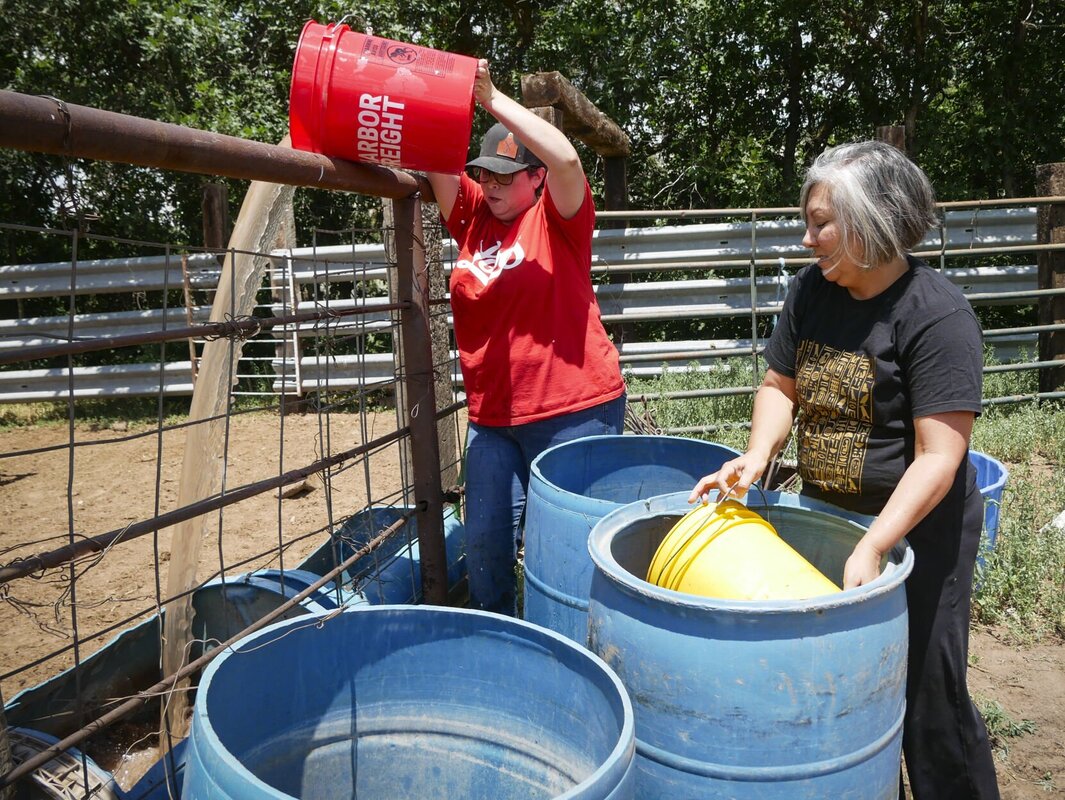 Veronica Vigil, left, and Debbie Vigil work together to fill cattle troughs with water Monday at the Vigil Ranch in Gallina. The family had found about 30 of their cattle Sunday in the burned area of Santa Fe National Forest where they graze their cattle. They estimated at least 50 pairs of cattle, mother cows and calves, remain missing. Matt Dahlseid/The New Mexican “We identify the areas that are of highest value to the community and to the other landowners in the area, and that we’re prepared to take actions if needed, to protect those lands, if the fire goes beyond where we expect it to, especially with outflows from thunderstorms and some of the other things that we can expect this time of year,” Coil said.
He added the team would help permittees provide care for any cattle in the fire area. The growth of the Laguna Fire comes as another lightning-ignited fire that was being managed by fire crews billowed out of control over the weekend in Arizona, destroying structures along the North Rim of the Grand Canyon. Arizona Gov. Katie Hobbs called for a federal investigation into the incident. Jeff Vigil said he saw the Forest Service conduct a successful prescribed burn in the fall several years ago. But there’s been little moisture in the area recently. “They never told us to move our cows before they started this fire,” Julian Vigil said. “If they had told us, we could have moved them out in a day and we wouldn’t be having these problems.” Staff writer Matt Dahlseid contributed to this report. Division will oversee programmatic services for older, disabled New Mexicans By: Leah Romero Source NM With additional state funds and reorganization of several programs, older New Mexicans, people with disabilities and caregivers now have support through the Aging and Long-Term Services Department’s reactivated Long-Term Care Division.
The Long-Term Care Division has long been part of the state’s aging department, but the division went dormant in Fiscal Year 2012 after community-based Medicaid waiver programs were moved from the division to the New Mexico Department of Health. Programs such as disability assistance and long-term living arrangements moved again last year to the Health Care Authority. The aging department asked for additional state funds to renew the Long-Term Care Division during the most recent legislative session, and received just under $7 million through House Bill 2 to staff and operate the division. Joey Long, spokesperson for the ALTSD, told Source NM that $500,000 of the total appropriation was directed specifically to the Long-Term Care Division, while the rest was appropriated from existing department funding. Long said the reestablishment of the division is expected to “streamline care coordination,” particularly around community-based services. The Long-Term Care Division “is going to be coordinating the care that helps us support people staying in their homes in their communities of choice. The division will be primarily focused on community and caregiver support resources, education and training,” Long told Source in an email. According to a recent ALTSD news release, the division will now provide “coordinated and comprehensive” support to New Mexicans by overseeing programs including New MexiCare, the Veteran-Directed Care Program, the Office of Alzheimer’s and Dementia, Care Transitions and the Kinship Caregiver Pilot Program. New MexiCare provides financial assistance and caregiver training to qualifying New Mexicans throughout the state, except Bernalillo and Doña Ana counties — however, the department has previously told Source NM that the goal is to expand the program to encompass all counties. The Care Transition Program provides assistance and resources for people transitioning out of a long-term care facility and back into their own homes or other community setting. “The inclusion of this division marks a pivotal moment in how we deliver care to New Mexicans,” Aging and Long-Term Services Department Secretary Emily Kaltenbach said in a written statement. “By housing these vital programs under one focused division, we are ensuring that families, caregivers, and individuals living with complex needs have streamlined access to high-quality, person-centered care.” According to the department’s news release, the Long-Term Care Division will also work to expand training opportunities and support for caregivers, enhance community-based services across the state, improve access to services in rural and tribal areas and oversee construction of “dementia-capable infrastructure.” According to Long, ALTSD Deputy Secretary Angelina Flores-Montoya will directly oversee the division. “This is about building out a care system where no one falls through the cracks,” Flores-Montoya said in a written statement. “With the launch of this division, we’re not just reorganizing; we are deepening our commitment to serving the full continuum of long-term care needs in New Mexico.” The Laguna Fire approximately 25 miles west of Abiquiú has grown to more than 15,000 acres, and prompted evacuation orders more than two weeks after Santa Fe National Forest officials announced their plans to let the fire safely grow instead of suppressing it immediately.
On June 30, the Santa Fe National Forest announced that lightning caused the 176-acre fire and that they were going to “actively manage” the blaze, hoping to encourage low-intensity fire to spread across a roughly 13,000 mile area. Noting that the fire was burning in an area that had undergone a National Environmental Policy Act review, and had previously been subject to prescribed burns and thinning, Santa Fe National Forest Deputy Forest Supervisor Anthony Madrid said the fire presented “an opportunity to create a resilient ecosystem that reduces the future risk of catastrophic severe wildfire to communities.” Since June 30, the Forest Service provided daily updates and smoke alerts. It also provided updates on where it was igniting managed fires to manage vegetation in front of an actively burning fire front. On July 12, the Forest Service announced that a spot fire had ignited outside of containment lines the day prior. Before the spot fire escaped, the fire had reached about 12,000 acres and was 87% contained. As of Tuesday, the fire is about 15,000 acres and is 40% contained, according to the Santa Fe National Forest. As a result of the escape, the Southwest Incident Management Team 1 took over the fire Monday morning, according to a Forest Service spokesperson, and is tasked with fully suppressing the fire. More than 250 firefighters and other personnel have mobilized to fight the blaze. Those who live in nearby Gallina Ranch are in “Go” evacuation status, and the Monastery of Christ in the Desert is at “Set” status, according to the Forest Service. The fire and smoky conditions prompted the monastery to close, according to its website. |
Submit your ideas for local feature articles
Profiles Gardening Recipes Observations Birding Essays Hiking AuthorsYou! Archives
October 2025
Categories
All
|
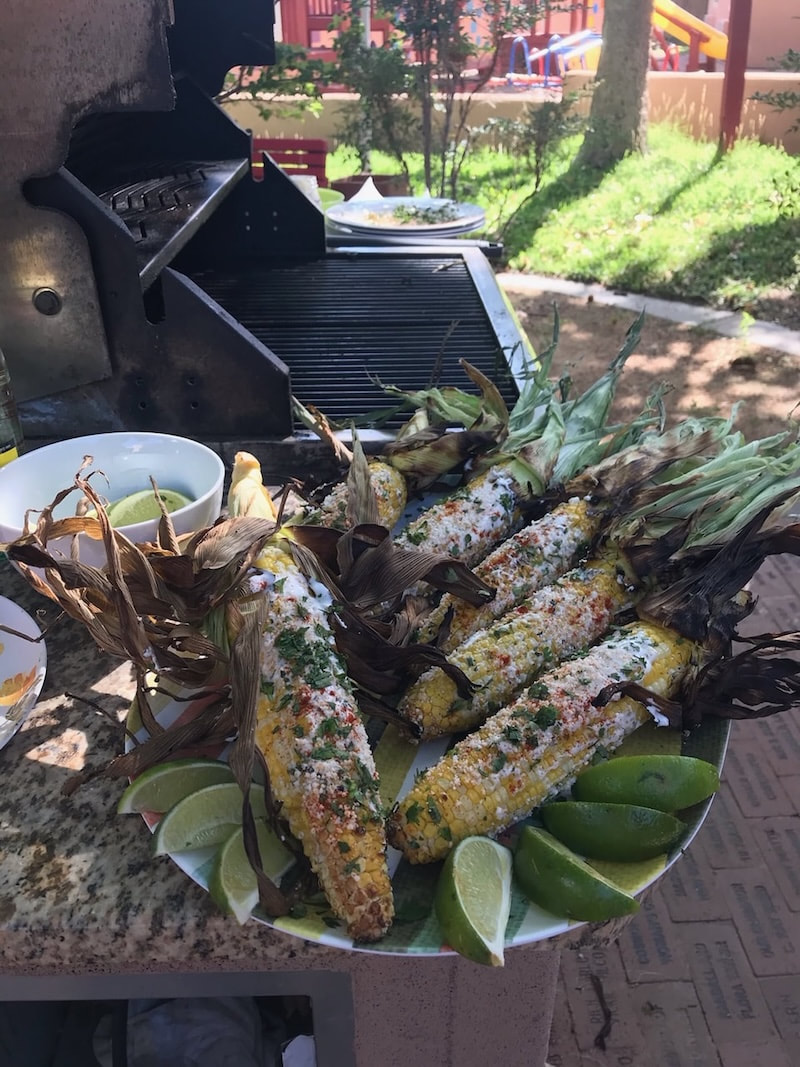




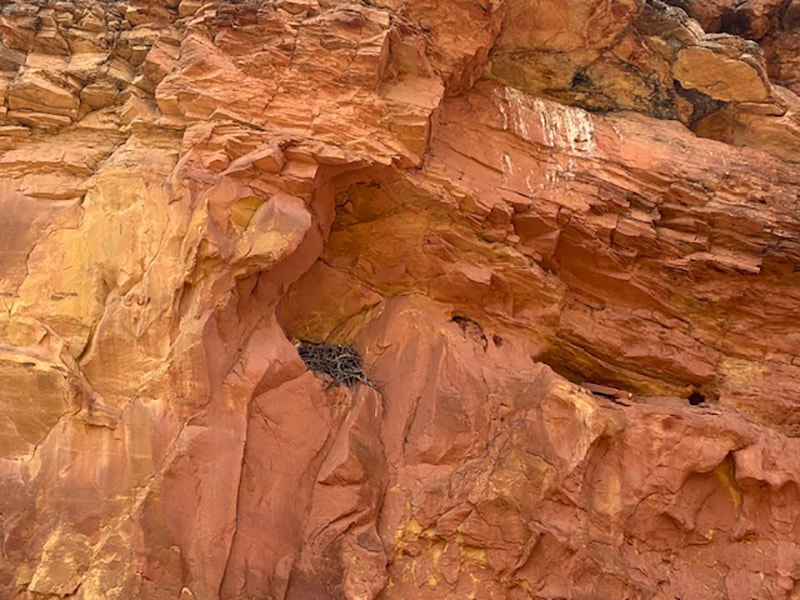
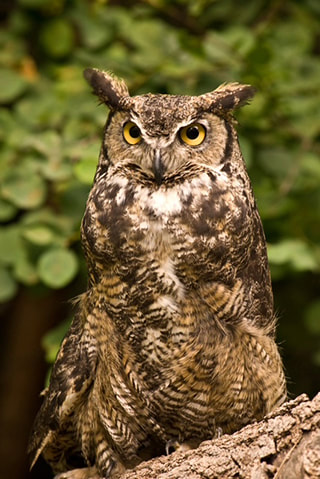




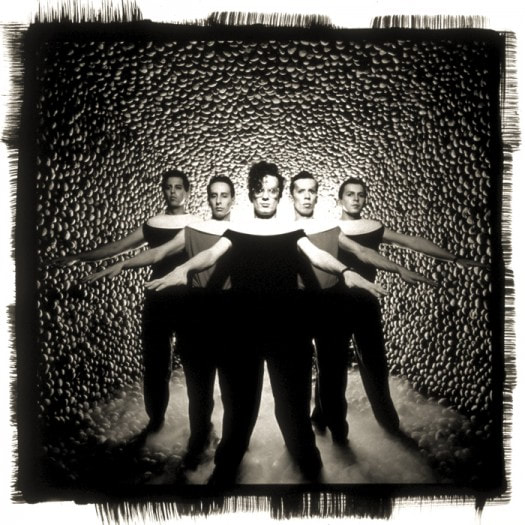
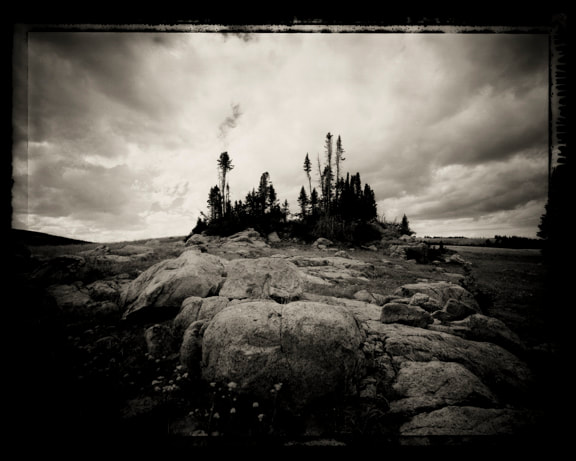










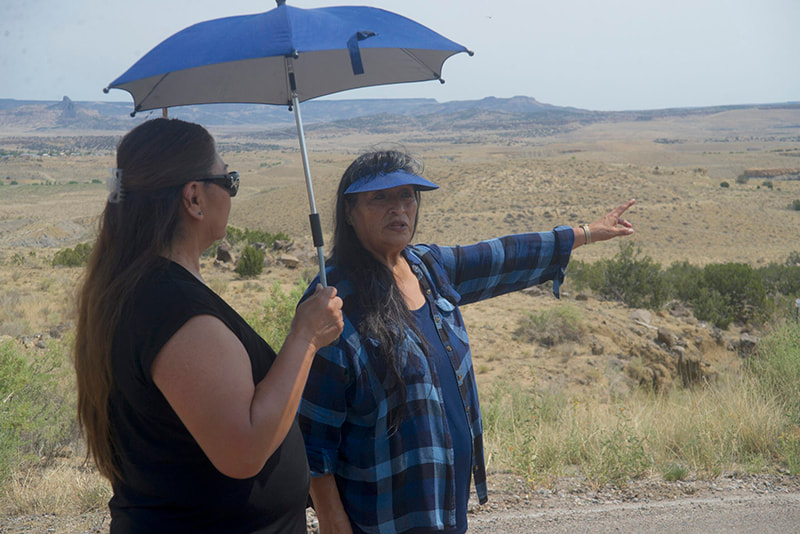

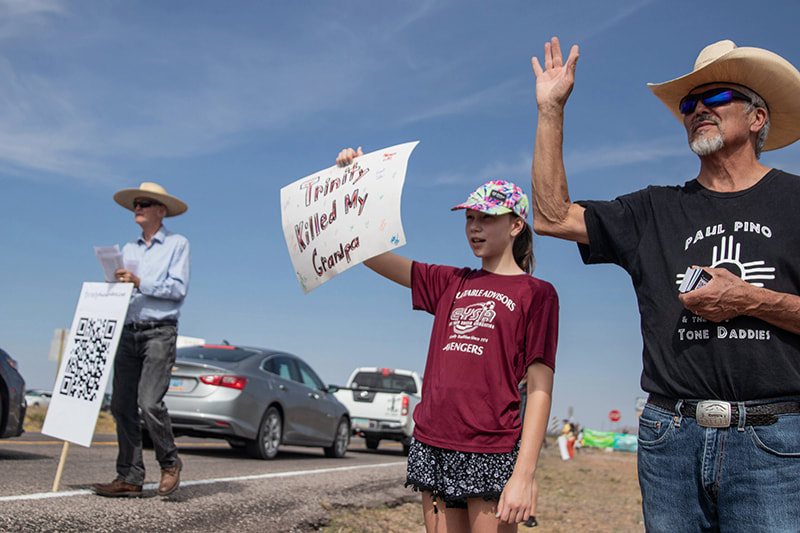

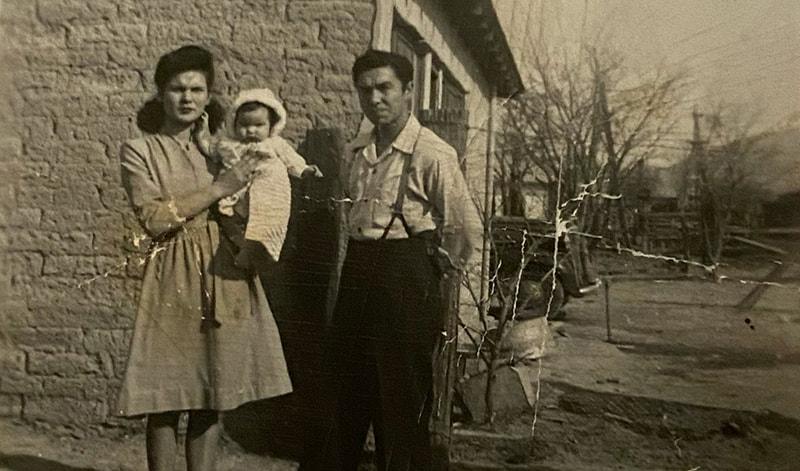
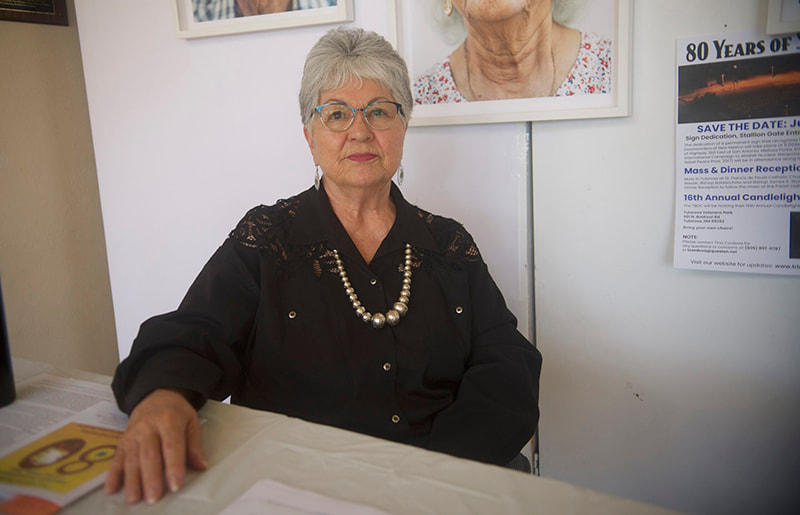


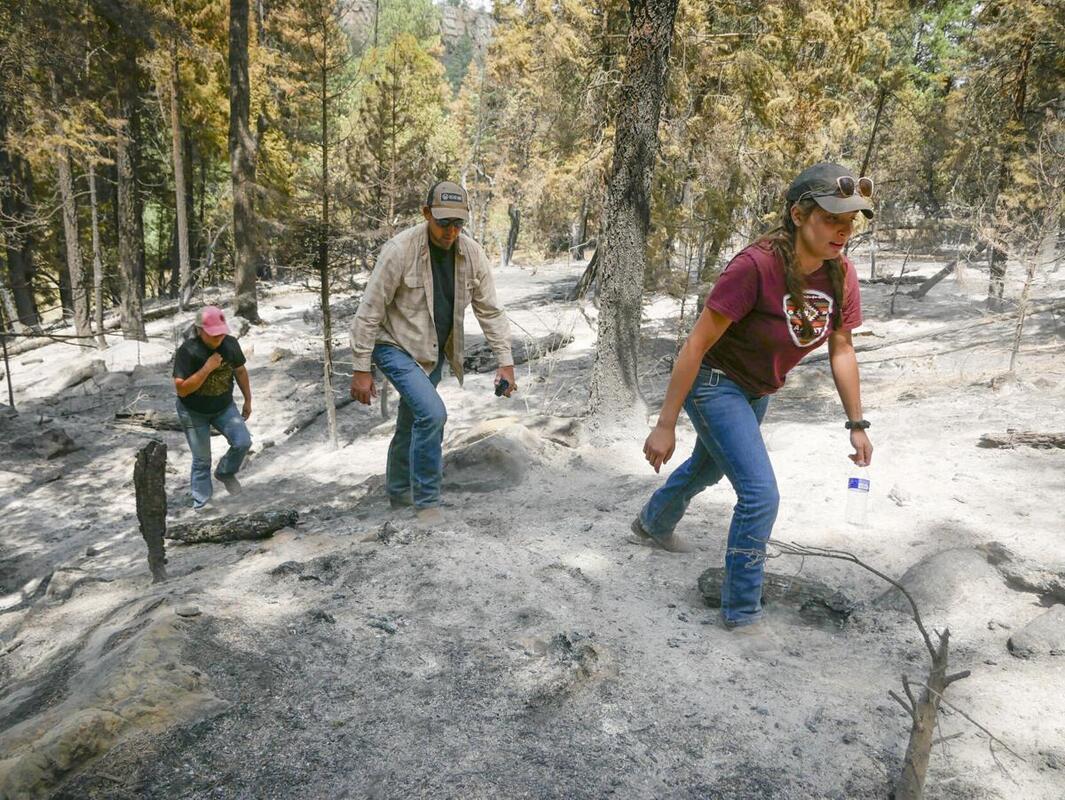
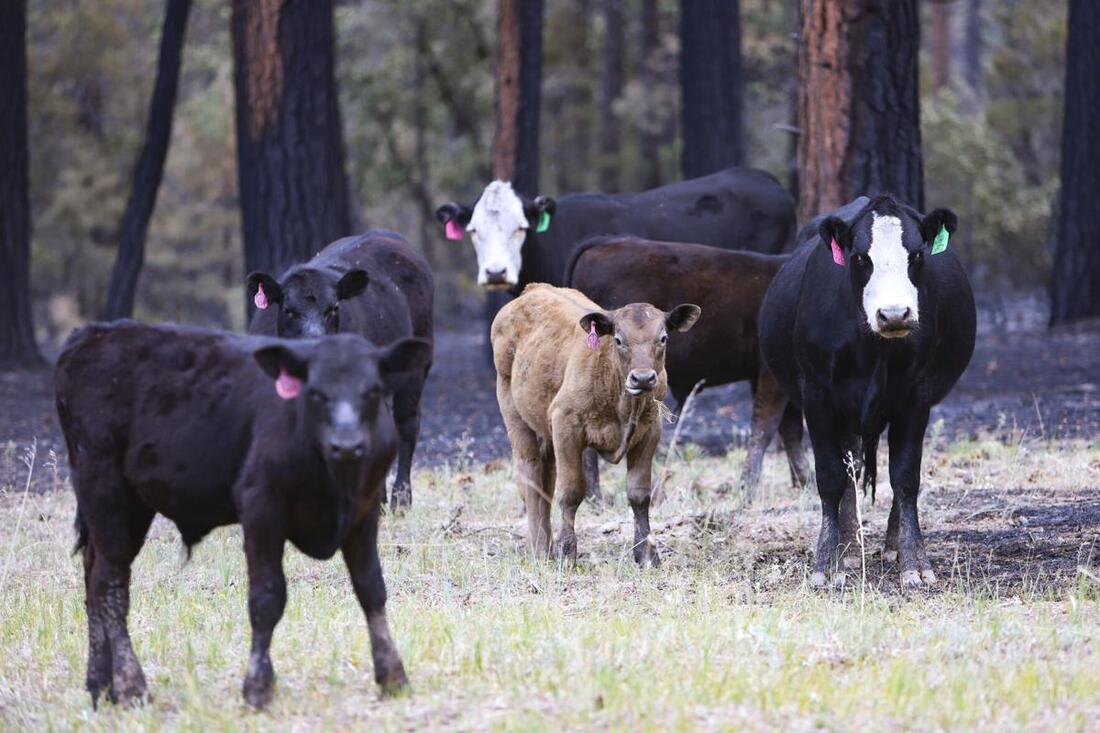
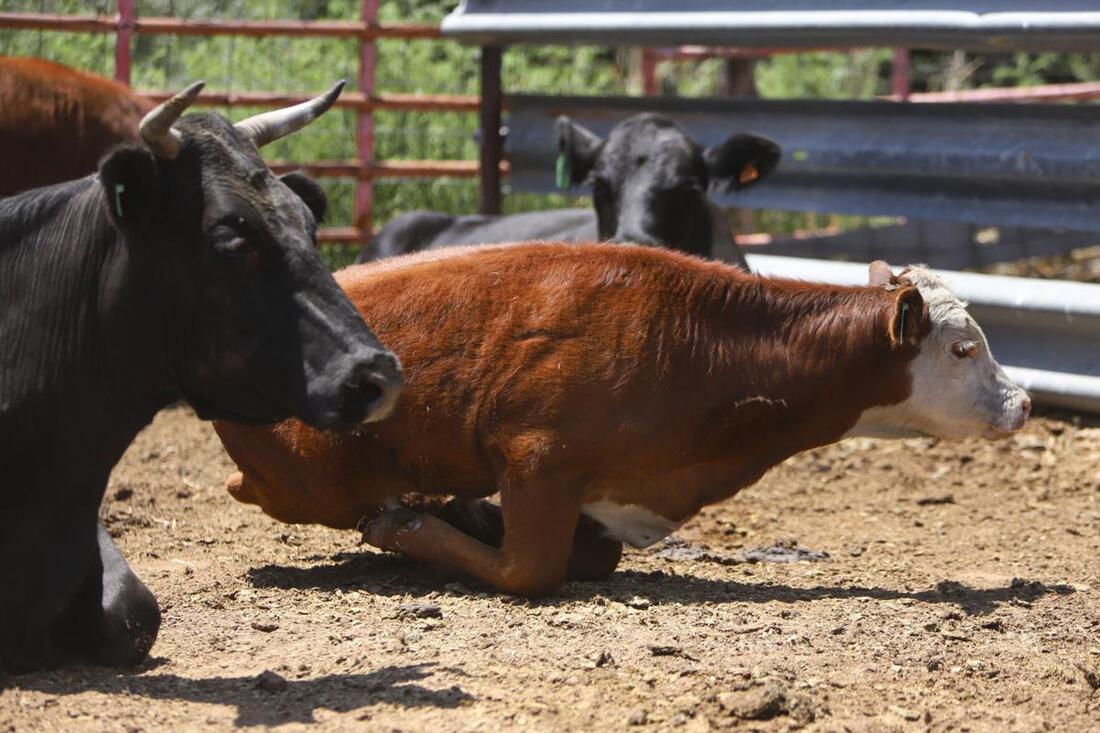

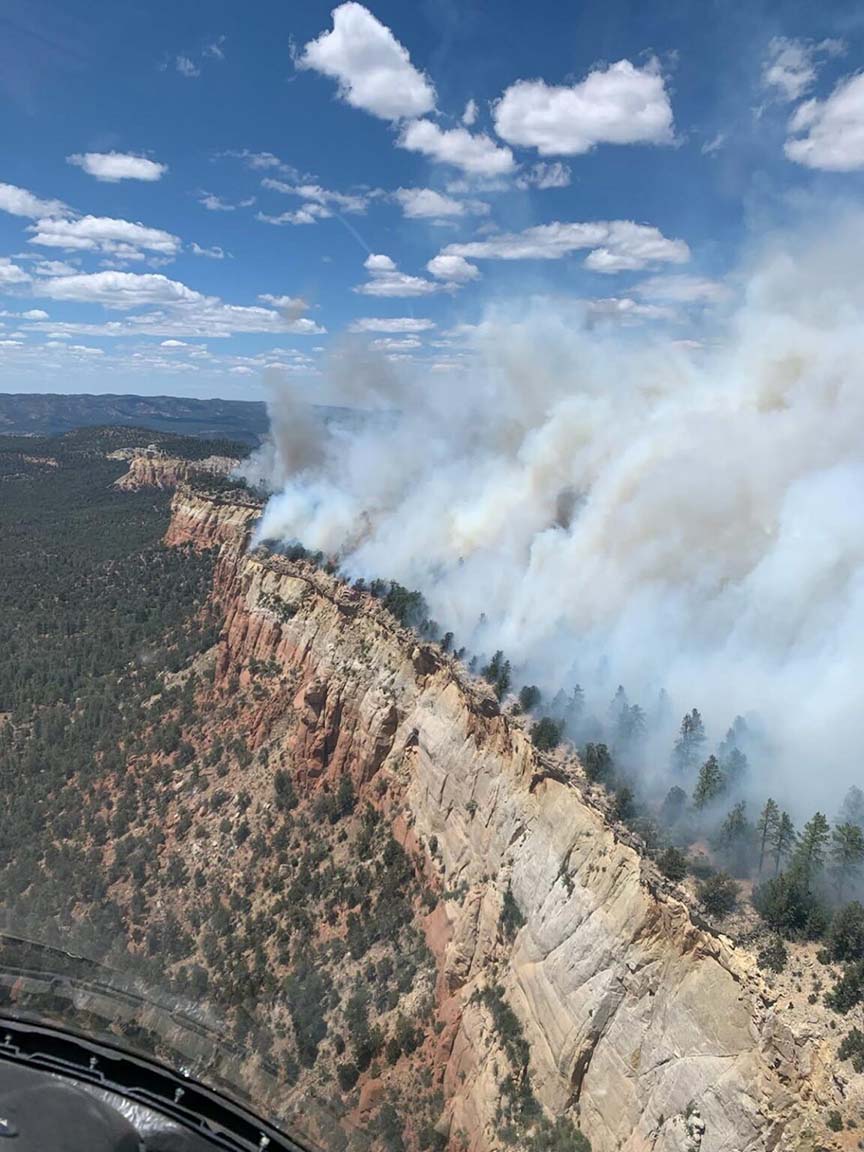
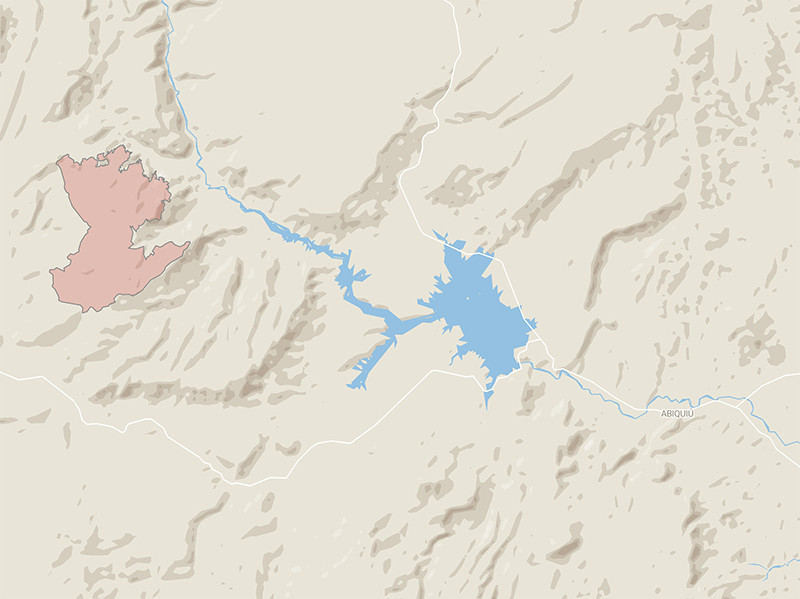
 RSS Feed
RSS Feed